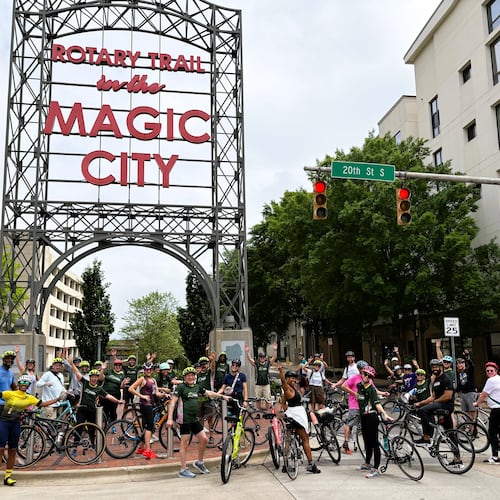CHANNEL ISLANDS — Mention that you’ve been to the Channel Islands, and you’re likely to be met with a quizzical look, quickly followed by, “Where’s that?”
The islands as a group sit in the English Channel, about 80 miles from the southern coast of England and about 14 miles north of the Normandy coast of France. Though allied with France at the time of William the Conquerer, for centuries they’ve been self-governing British Crown dependencies. Their history and customs are a rich mix of both cultures.
The four main islands, in descending population size, are Jersey (about 90,000), Guernsey (about 59,000), Alderney (about 2,300) and Sark (about 600). Those islands are flanked by several smaller ones, some privately owned. Banking and finance are big as far as industry goes, agriculture provides some employment (think Jersey and Guernsey cows), and tourism is important. Most visitors, a whopping 87 percent, come from the United Kingdom. So, the next question might be: “What is there to do there?”
On Jersey and Guernsey, you can fill many hours touring castles and World War II sites looking at documents and artifacts, visiting museums or just wandering the picturesque lanes and valleys outside the main towns. Sark is particularly good for a lengthy ramble, though there is also plenty to admire on Jersey and Guernsey when it comes to wildflowers, wildlife, rugged cliffs, secluded bays and inviting beaches. And if water sports are your thing, fishing, sailing, swimming, sea kayaking and seasonal whale-watching are among the possibilities. Jersey even has two golf courses and a large statue of native son Harry Vardon, six-time British Open champion.
The defenseless islands were the only British territory to be occupied by the Germans, lasting from late June 1940 to early May 1945. Liberation Day is celebrated annually on May 9, reminding islanders of the hardships, deprivations and food shortages of the war years.
Here are a few attractions to get you started:
Jersey
Jersey War Tunnels: From late 1941 to June 1944, thousands of forced and slave laborers, brought in mostly from German-occupied countries, built this complex, also known as Hohlgangsanlage 8. Except for the entrance, the tunnels are completely hidden from view. Ammunition was stored here, and the chilly tunnels were equipped to accept German casualties from the fighting in Europe, though they were never called upon to do so.
Displays give an excellent history of what life was like during the occupation through newspapers, first-person videos and memorabilia. Curfews were imposed, wireless sets were confiscated and food was in short supply, particularly such items as sugar and coffee. The resourceful locals substituted boiled sugar beet syrup for the former and ground acorns or roasted, blackened parsnips for the latter. (For a portrait of daily life, read “The Guernsey Literary and Potato Peel Pie Society.” Though it’s not based on Jersey, the island experience was very similar.)
Mont Orgueil ("Mount Pride") Castle: Sir Walter Raleigh, appointed by Queen Elizabeth as governor of the island, was told by his sovereign to dismantle the castle and to use the materials for Elizabeth Castle, then under construction in the 1590s. Raleigh made the case that its location — perched high on a rocky promontory with water on three sides and with the coast of France visible on a clear day — made it a "fort of great capacity" and that the structure should be left intact. Historians believe that some artifacts date to the Iron Age, and that it began to take on a castle look by 1212.
Further additions and retrofits continued throughout the centuries with the latest being in 1940, during the occupation. The Germans dug trenches, added batteries to the towers and turned some rooms of the keep into barracks. However, since there was no combat, no damage was done to the castle.
Mont Orgueil recently underwent a five-year restoration and is in glorious shape, though it is largely unfurnished. Many rooms feature some sort of artwork highlighting medieval times, such as the “Tree of Succession,” which traces the intertwined dynasties of the French and English royal families.
Other attractions: Elizabeth Castle, Hamptonne Country Life Museum, Jersey Museum and Art Gallery, Maritime Museum and Occupation Tapestry Gallery, Durrell Wildlife Conservation Trust, Jersey Lavender Farm, Jersey Shell Garden.
Guernsey
Hauteville House: French novelist Victor Hugo ("Les Miserables," "The Hunchback of Notre Dame") spent nearly 15 of his 19 years as a political exile living in this white four-story house up a steep hill from St. Peter Port. Much of the heavy wooden, ornately carved furniture was of his design, drawn from his travels through Europe.
The decor is an eclectic mix of styles and furnishings, and the interior is very dark. One room is covered with Flemish- and French-made tapestries on nearly all surfaces, including the ceiling (hidden behind one panel is a photography dark room). Blue-and-white tiles from Delft in the Netherlands surround a dining room fireplace, with the squares above arranged in a double “H.”
On the top floor is Hugo’s small bedroom, book-lined corridor and light-filled space where he wrote. The room and its balcony afford a splendid view of the harbor, Castle Cornet and Havelet Bay.
German Occupation Museum: Nearly 12,000 German troops were stationed on Guernsey, and this fascinating private collection of memorabilia ranges from their band instruments, uniforms, medals, weapons and an Enigma machine (used for coded messages), to a horse-drawn ambulance (necessary because of gasoline rationing).
Other attractions: German Military Underground Hospital, Sausmarez Manor, Fort Grey and Shipwreck Museum, the Little Chapel, Guernsey Museum and Art Gallery, Guernsey Tapestry, La Vallette Underground Military Museum, Guernsey Aquarium, National Trust of Guernsey Folk Museum.
Sark
Until its first election in the winter of 2008, this island had been the last feudal state in Europe. The seigneur, whose hereditary power dated to Elizabethan times, was replaced by a democracy.
No cars are allowed on Sark. Your options to get around: Rent a bicycle, ride in a horse-drawn cart or walk. The island is only about three miles long and 1.5 miles wide and boasts 40 miles of rugged coastline. If you want peace and quiet, this is the place.
La Seigneurie Gardens: The seigneur and his wife live here. However, only the walled garden, touted as the finest in the Channel Islands, and the grounds are open to the public. There really is a primrose path, and a wide variety of plants, herbs and flowers are cultivated. You should be able to see everything — from the bronze cannon presented by Queen Elizabeth I to the first seigneur, to the dove cote — in about an hour.
Daytime ramble: This is all about drinking in nature as you tread the gravel paths from the harbor up a knee-challenging hill through "town" and beyond. If you visit in the spring, you're likely to see thousands of dangling bluebells, particularly in the Dixcart Valley, primroses, dog violets, foxgloves and wild garlic. Though there is ample shade, a hat and sunscreen are advised.
As you’re walking southwest toward Little Sark (reached by crossing the tiny isthmus La Coupée), you’ll pass several small restaurants where you can pause for refreshment. About midafternoon, I stopped at Sue’s Tea Garden, where, once through the entrance, I was surrounded by plants. Sue Guille makes all the items on the menu. I highly recommend a slice of ginger cake, an herb-cheese scone and a pot of Earl Grey tea.
Hotels and self-catering are available on Sark. But if you stay, make sure you build an extra day or two into your schedule. If the weather is uncooperative, the ferry doesn’t come from Guernsey, and you could be stranded until conditions improve.
If you go
The easiest route is to take Delta (www.delta.com) nonstop from Atlanta to London Gatwick (about $815 for midweek departure and return in May) and connect to Jersey from there. British Airways (www.ba.com) and Flybe (www.flybe.com) have service to Jersey (flight is under an hour), and Flybe also flies to Guernsey. Condor Ferries (www.condorferries.com) provides service between Jersey and Guernsey (36 pounds round trip, about $54). Isle of Sark Shipping Co. (www .sarkshippingcompany.com) runs between Guernsey and Sark. Manche Iles Express (www.manche-iles-express.com /normandie_eur.php) also provides limited ferry service between Sark and northwestern France via Jersey.
Getting around
Jersey and Guernsey have excellent islandwide bus service and easy-to-understand maps and routes. Most rides on Jersey are about $1.50 or $2. On Guernsey, most rides are about $1. Money-saving travel passes are available.
You can rent a car but be warned: Driving is on the left, and on Guernsey, some village lanes are so narrow two cars can’t pass.
What to see
Jersey: Mont Orgueil Castle, www.jerseyheritage.org/home; Jersey War Tunnels: www.jerseywartunnels.com
Guernsey: Hauteville House, www.victorhugo.gg/hauteville-house
Sark: La Seigneurie Gardens: www.la seigneuriegardens.com
Where to stay
Jersey: Best Western Royal Hotel, David Place, St. Helier. www.bestwestern.com.
Guernsey: La Barbarie, Saints Bay, St. Martin's. www.labarbarie hotel.com.
Information
Jersey: www.jersey.com
Guernsey: www.visitguernsey.com
Sark: www.sark.info
About the Author
The Latest
Featured

